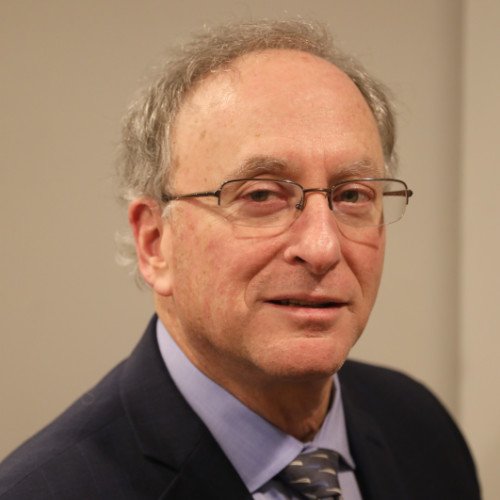“There are no facilities on the South Shore that can accommodate more than 225 for a sit-down dinner event, and this venue would be a desired location,” Zaia said. “I realize it’s near the water and part of an Area of Critical Environmental Concern, but magic can happen.”
Monday’s meeting was the second this month to be facilitated by UMass-Boston professor Douglas Thompson. The HRA is considering changes to the Urban Renewal Plan that guides development of the 13-acre parcel after hearing from residents and presenting their own ideas in past meetings.
Idea of Hull WaterFire floated
Zaia’s concept also includes creating a Hull spinoff of Providence, Rhode Island’s WaterFire; improved transportation, with added bus stops and signage along the HRA property; metered parking along Hull Shore Drive from The Parrot to the Phipps Street comfort station; and a possible partnership with the Blue Cross BlueShield BLUEbikes program.
A Hull WaterFire “would generate opportunities for Hull citizens and visitors alike to gather and enjoy the sights of flickering flames on the water and adult rowers of the Hull Lifesaving Museum rowing to load the braziers with wood while music, dance, art and theater may be happening on the bayside park area,” he said.
In response to HRA member Adrienne Paquin’s question about who would own and run such a development, Zaia responded, “That’s the big question. The answer is not yet known. I don’t have a clue.”
For more information, including the draft Urban Renewal Plan, click here.
Zaia also said that his vision for the property has moved away from affordable housing with the recent passage of the state MBTA Communities Act and by-right accessory dwelling unit legislation, which he feels could provide other viable opportunities for affordable housing.
In addition, Zaia suggested aligning the HRA’s objectives with the select board and the Department of Conservation and Recreation “to identify and support opportunities which advance the vitality and value of the Hull community, while ensuring there are adequate affordable housing units for first responders, veterans, and seniors by updating the zoning requirement to ensure at least 15% of new properties in the MBTA Communities zones are deed-restricted ‘affordable’” and addressing this same concern with respect to the accessory dwelling unit regulations recently approved at town meeting and the more stringent ADU requirements recently adopted by the state.
Animated discussion
The discussion among HRA members during the three-hour meeting was often animated, with a wide variety of opinions and ideas shared without making any major decisions. The idea of getting the select board involved in the overall discussion was floated, since its approval, along with the state’s, is necessary for any URP to move forward.
“We are only the first step in the process,” Zaia said.
Paquin noted that a URP can “be as specific or not to allow for flexibility or not. It’s simply an option on the table. We could issue another RFP [Request for Proposals], we could disband, or we could do nothing,” she said. “We’re under no obligation to do anything. We could give the land to the town and disband tomorrow.”
HRA meetings with the same format and continued guidance from Thompson are scheduled for October 8 and 15 at 7:30 p.m.
As was the case at the August 12 HRA meeting, this was an opportunity for HRA members to dig deeper into what they envision for the property and to reach a consensus, and while residents were encouraged to attend in-person in the Hull High School exhibition room or watch the meeting live on Zoom or on hulltv.net, no public comments were accepted.
The audience remained a listening one following Zaia’s request at the beginning of the meeting in response to attempts to interject comments into the discussion during the August 12 meeting.
While no consensus has been reached, all five members agree that some form of open space should be included in the final plan and that including the HRA’s legal counsel in an upcoming URP discussion is a good idea.
‘We should make a wish list and narrow it down’
Kelly said the HRA “should go back to defining the different parcels and their potential use” to determine what is economically viable.
“We should make a wish list and narrow it down to what we can accomplish with available funding.… the devil is in the details,” he said. “We’re miles apart. The plan has to be economically viable to work.”
Paquin noted that economic stimulus was not part of the HRA’s original goal.
“I’m not saying we should disregard that part, but it’s not up to us to solve all the problems in the town,” she said.
Part of the discussion centered around differences of opinion among HRA members as to the meaning of certain definitions contained in the authority’s goals and objectives, and the already town meeting-approved and partially funded two-way road plan.
While HRA member Dan Kernan supports preserving the parcel as open space, he acknowledged that there was no “real opposition” to Zaia’s idea, and that while it’s “not making us happy, I don’t have a fundamental conflict. I like [some of the components].”
‘One of Hull’s most beautiful parcels’
At the same time, in advocating for open space, Kernan said, “This is one of Hull’s most beautiful parcels – between the bay and the ocean and the only chunk of Nantasket Beach that’s sandy. [Landscape architects] would drool over the opportunity to make this the jewel of the whole state park system. We would be the number one beach in Massachusetts – a treasure if we do it right. It would make national news.”
At the end of the session, Thompson told HRA members that in order to reach a consensus, “You will all need to agree to move forward together and not necessarily remain with your preferred approaches. This [discussion] has exposed some fault lines and differences, but frankly it’s kind of expected, and with some compromise, the HRA will find something that can work for all of you. You have made some progress there.”
The HRA is in the process of hiring an administrative assistant. “We can’t continue to do this on our own,” Zaia said.
A replay of the meeting is available on demand on hulltv.net. To view the draft URP and other HRA documents, visit www.hra02045.com.
The redevelopment authority was formed in the 1960s under a federal program to revitalize urban and suburban neighborhoods. The HRA’s original footprint – designated Town Center No. 1 – encompasses the land between the beach and bay from Water Street to Phipps Street; at one time, the authority planned to expand its territory into three additional districts that stretched southward to the site of the former Paragon Park.
Much of the HRA land has been vacant since the 1970s, when homes and businesses were taken by eminent domain by the authority and bulldozed, burned, or relocated in anticipation of development proposals that never materialized. The HRA has been working for the past several years to create a set of guidelines for future development.
A 2023 version of the URP envisioned several uses for the property, including a boutique hotel and buildings with ground-floor retail and residential units on the upper floors. For the property north of the DCR parking lot near Monument Square, options included affordable housing or beach parking and event space. The HRA stepped back from that plan and has embarked on the current process to rework the URP.
Like what you’re reading? Stay informed with a Hull Times subscription by clicking here.
Do you have an opinion to share? Click here to write a Letter to the Editor.

























